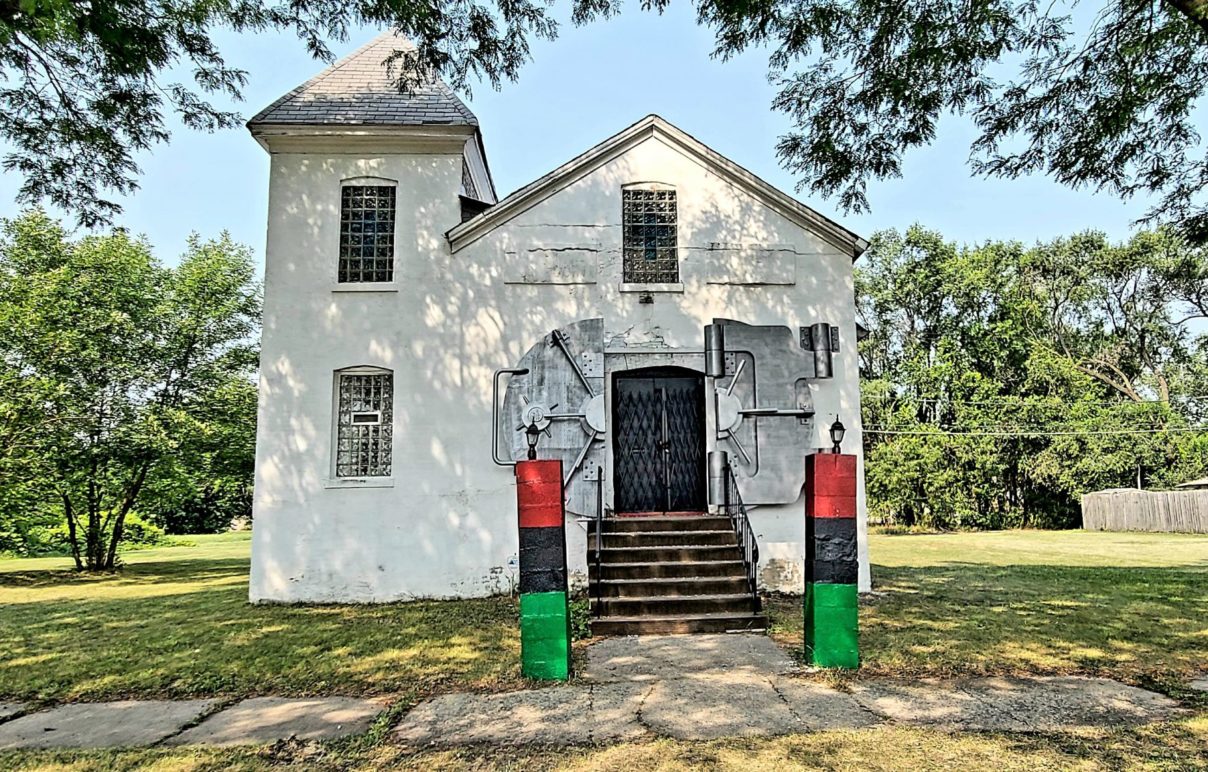
“Safehouse Temple Door,” Civic Arts Church, 2021.
Image courtesy of: NewCity Art
Sweet Water Foundation (SWF) is a Chicago-based organization that practices “Regenerative Neighborhood Development.” Employing urban agriculture, art, and education, the foundation seeks to transform abandoned buildings and vacant lots (and blocks) into (courtesy of the foundation’s web site), “economically and ecologically productive and sustainable community assets that produce engaged youth, art, locally-grown food, and affordable housing.”
The philosophy’s underlying ethos is that creating safe and inspiring spaces is the best way to reinvigorate struggling neighborhoods. Founded in 2014, SWF’s most significant accomplishment was transforming four city blocks into The Commonwealth, “a real-word, physical manifestation of how built spaces reflect and impact understanding of the common and the collective.”
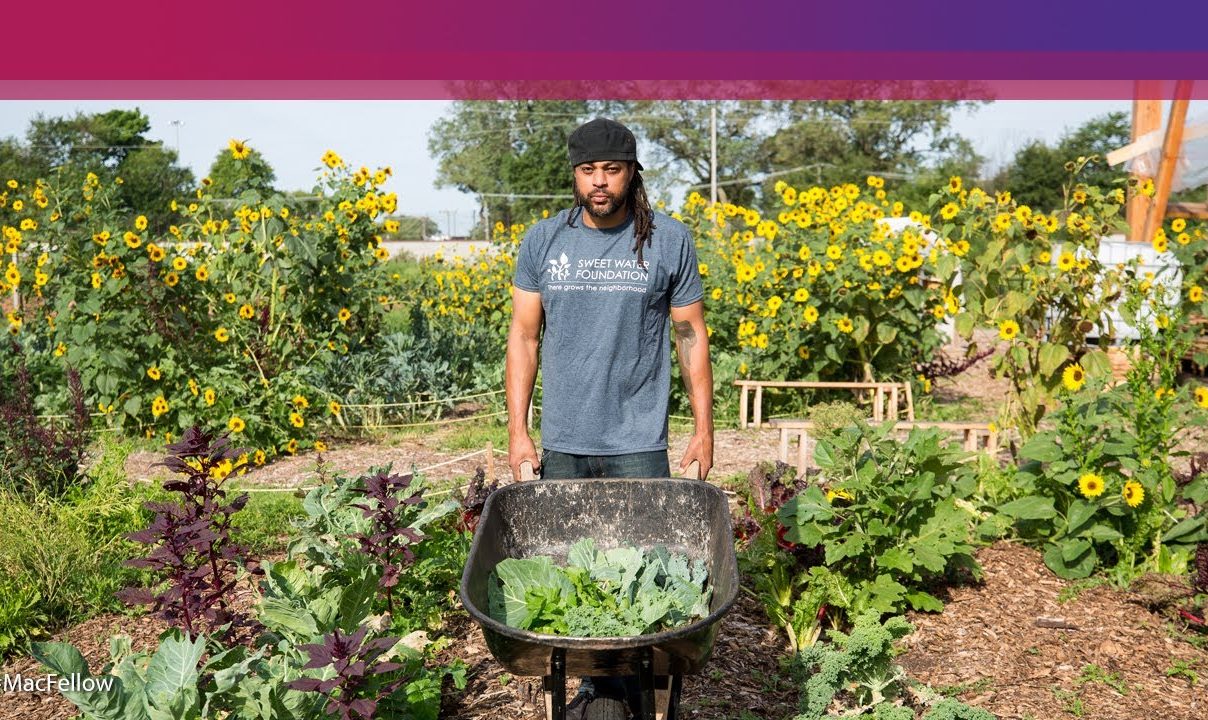
Emmanuel Pratt at the exhibition barn during summertime.
Image courtesy of: MacArthur Foundation
At SWF’s helm is Emmanuel Pratt, executive director and architect/urban planner. Pratt states that he believes the projects to be “‘regenerative’ in both human and neighborhood terms. ‘We reclaim vacant properties by transforming them into productive public spaces that grow healthy food and engage intergenerational audiences in programming.'”
Pratt’s expertise comes from personal experiences; growing up in Richmond, Virginia, he was constantly moving from place to place with his mother… searching for safe locations. His unique approach to regenerating neglected neighborhoods involves employing construction, stage design, urban farming, carpentry, and teaching the arts to struggling residents. No one is glossed over as locals include former prisoners, those undergoing drug rehab, and homeless youth.
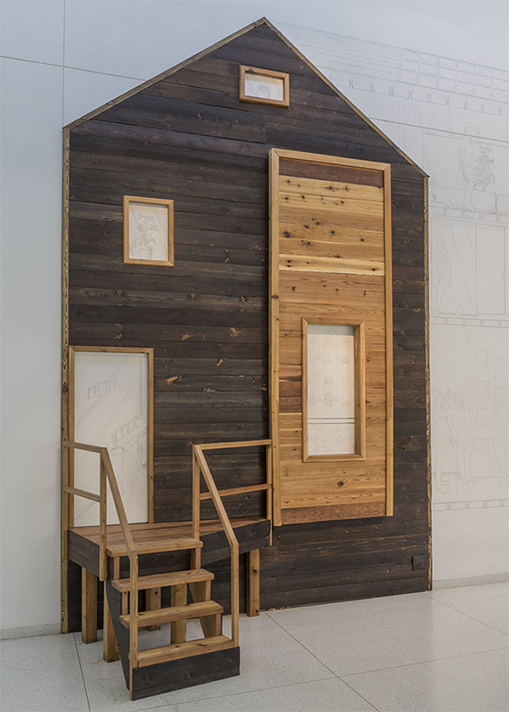
On display at The University of Chicago’s Smart Museum, the installation is an authentic representation of a home being reconstructed by SWF. All of the materials used are recycled; for example, the salvaged wood was used to transport large glass windows for the Campus North Residence Hall near the Museum. Prior to construction, the wood was treated by Pratt and his young apprentices; it was then finished employing shou sugi ban, a traditional Japanese charring technique.
Image courtesy of: Smart Museum Of Art (The University of Chicago)
Specifically, the renovation of an abandoned Black church from the early 1900s into a cultural arts center garnered a lot of attention… and is, rightfully so, a cause for celebration. At the border of two troubled neighborhoods, Englewood and Washington Park, the project has “reoccupied” several South Chicago blocks that have been virtual ghost towns after years and years of disinvestment.
Minimally renovating two neglected houses and adding structures built from salvaged wood and greenhouse components, the end product is a woodworking shop, an exhibition barn, and a small “gallery space” that displays work created at the Commonwealth.
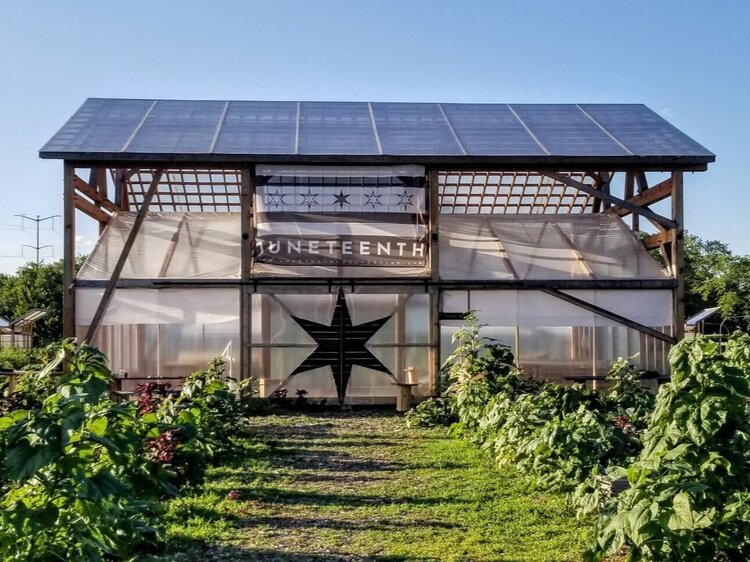
The Thought Barn
Image courtesy of: Sweet Water Foundation
One of SWF’s Commonwealth’s most important contributions was to reintroduce agriculture within Chicago city limits. The philosophy is that agriculture is at the basis of neighborhood revitalization. In addition, the project successfully transformed abandoned and foreclosed homes into local schools and live-work residences.
The Commonwealth is actually comprised of eight distinct structures. The Thought Barn is the first building developed- it serves as a performing and visual arts center and a community gathering space. The Community Farm was started in May 2014 and now occupies an entire city block. With more than 210 rows of vegetables, the farm employs local residents and feeds more than 200 residents each week. The Think-Do House took the place of a formerly foreclosed home- now, it is a community hub that hosts a number of meetings, workshops, cooking demonstrations, and educational seminars each week. The Work-Shop is at the heart of the Apprenticeship & Outreach Program where residents are able to learn carpentry. In 2017, SWF built a multi-purpose greenhouse nearby, however, it serves as a secondary space.
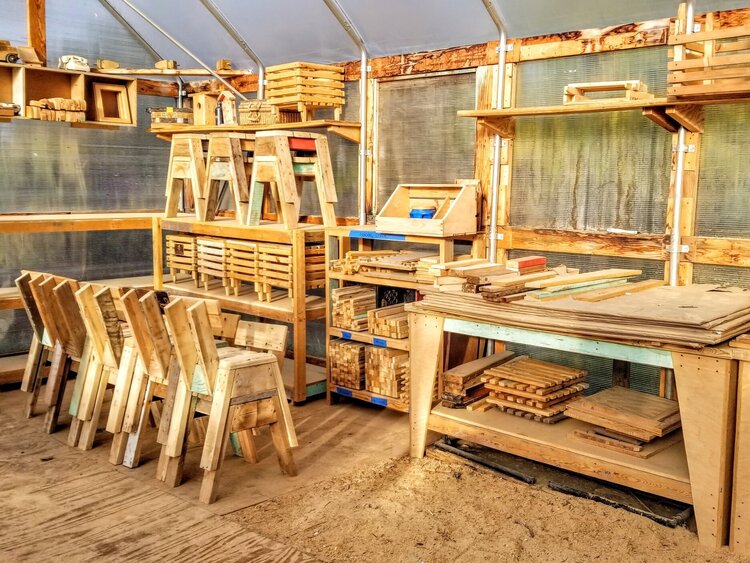
In 2017, The Work-Shop was built inside a multi-purpose greenhouse; it serves as a workshop, maker-space, and classroom.
Image courtesy of: Sweet Water Foundation
At the heart of The Commonwealth is the [Re]Construcation House. This building focused on transforming a house that had been vacant for many years. The dwelling was donated to SWF in 2016 with the hopes that it will be brought back to its former glory; the rehab was completed in 2019. The Smart Pod is located inside a discarded commercial shipping container; it is a special place with an inspiration gallery and educational space. The Community Gardens contains 24 garden beds with a wide variety of herbs and vegetables. Accessible to local residents throughout the year, the gardens also serve as an interactive learning space. Finally, the RND Park & Meeting House is a public park that spans five empty parcels of land. The space is a “safe space” for local residents; it is also a place that inspires though dreaming up new forms of housing development.
Courtesy of The New York Times, the ultimate meaning behind the project “is to uncover the erased history and accomplishments of local people. The work imagines new possibilities for a neighborhood that has had no sustained investment for decades.” We are so lucky this is in our home town!